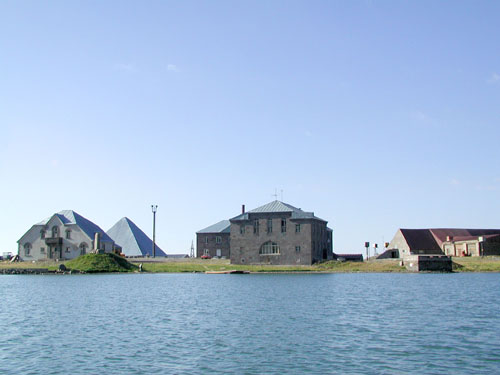
The Cosmic Ray Division (CRD), together with its unique high-mountain scientific stations, collaborates with many international organizations, and is the founder of the European SEVAN (Space Environment Viewing and Analysis Network) detector network.
Data obtained from the 24/7 monitoring of secondary particles, available in the CRD scientific database, is combined with data from stations scattered around the world, contributing to a more complete picture of the universe. The mirror databases of the CRD in Europe expand the capabilities of the international scientific community to observe all kinds of changing fluxes of secondary cosmic rays and particles from thunderclouds.
Cosmic ray research on Mount Aragats started in 1943 by Artem and Abraham Alikhanyan brothers. Since then, research has been going on at “Nor-Amberd” and “Aragats” stations which sit at an altitude of 2000 metres and 3200 metres, respectively, as well as in Yerevan. CRD studies different aspects of cosmic ray physics, recently targeting also the acceleration of particles in the Earth's atmosphere during thunderstorms.
CRD has established networks of particle detectors for studies of space weather and Sun-Earth relations. The equipment of the Aragats Space Environment Center continuously records the secondary flows of neutral and charged cosmic rays falling on the Earth's surface. Every year, since 2009, the center has recorded more than 100 increases in electron, gamma ray, and neutron fluxes that have been correlated with thunderstorm activity and have been called Ground Thunder Surges.
SEVAN is an international network of elementary particle detectors with equipment placed at low and mid latitudes. The goal of the network is to improve fundamental studies of space weather conditions and provide short- and long-term forecasts of dangerous space storms. Scattered nodes of the network enable the recording of changes in the fluxes of secondary cosmic rays in different geographical locations, thus becoming a powerful integrated instrument used for the study of solar activity. Since 2007, the first 4 SEVAN detectors have been installed and operated in Yerevan and on the slopes of Mount Aragats, at altitudes of 1000, 1700, 2000 and 3200 m, respectively. Since 2008, SEVAN network has been expanded and currently there are detectors installed in Croatia, Bulgaria, Germany, Czech Republic, Slovakia and India.
International cooperation
There are dozens of collaborating institutes within the NMDB (Neutron Monitor Database) project, 5 collaborating institutes within SEVAN project in Croatia, Slovakia, Bulgaria, Germany and the Czech Republic. CRD is also strengthening its ties with partners in the USA (MIT, Florida University , etc.), Russia (MEFI, IKI, SINP MSU, etc.), Germany (DESY, MPI Munich, KIT), etc.
Career and education opportunities
Prospective students and young researchers can apply for Ph.D. and Master's programs in CRD.
Learn more

